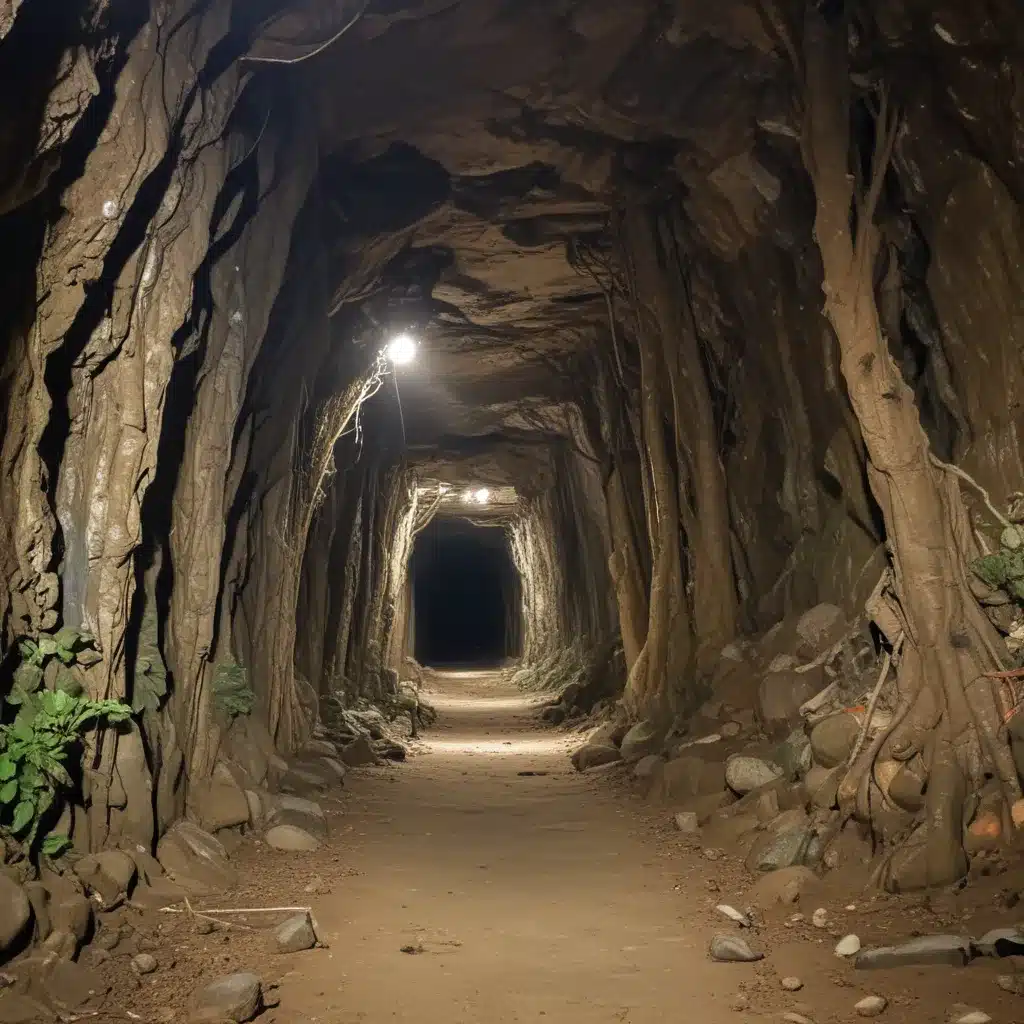
Uncovering the Secrets of Palawan’s Wartime Past
I’ll never forget the first time I set foot inside those eerie, winding tunnels on the island of Palawan. As I cautiously made my way through the damp, claustrophobic passageways, the air thick with the scent of earth and history, I couldn’t help but feel a sense of awe and unease wash over me. The walls, lined with crumbling concrete and rusting steel, seemed to whisper the echoes of a long-forgotten conflict – a time when this island paradise was transformed into a battleground.
You see, Palawan is no stranger to the ravages of war. During World War II, the Japanese Imperial Army occupied the province, establishing a vast network of underground fortifications to defend against the advancing Allied forces. And today, these once-formidable structures stand as haunting relics, a testament to the resilience and ingenuity of those who fought to reclaim this land.
Navigating the Labyrinth of History
What fascinates me the most about these Japanese tunnels is the sheer scale and complexity of the engineering feat. Stretching for miles beneath the lush, rolling hills of Palawan, the intricate system of tunnels, bunkers, and ammunition depots was designed to withstand even the most intense bombardment.
As I carefully make my way through the dimly lit corridors, my footsteps echoing eerily, I can’t help but marvel at the meticulous planning and execution that went into their construction. Each turn reveals a new chamber, a new purpose – from hospital wards to command centers, all meticulously carved out of the earth to provide shelter and strategic advantage.
What’s truly remarkable is the level of detail that went into these underground fortifications. Many of the tunnels are equipped with ventilation shafts, emergency exits, and even small-scale power generators – a testament to the ingenuity and foresight of the Japanese engineers who designed them. It’s as if they had anticipated every possible scenario, every potential threat, and planned accordingly.
A Harrowing History Preserved
As I delve deeper into the labyrinth, the weight of history becomes increasingly palpable. In some of the larger chambers, I can almost feel the presence of those who once occupied these spaces – the soldiers who huddled in the darkness, awaiting their fate, the medics who tended to the wounded, the commanders who plotted their next move.
It’s a sobering thought, and one that is only amplified by the artifacts that remain scattered throughout the tunnels. Rusting weapons, shattered glass, and tattered uniforms serve as poignant reminders of the human cost of war. I can’t help but wonder about the stories behind these silent witnesses, the lives that were irrevocably changed by the events that unfolded here.
Yet, as somber as the experience can be, there is also a sense of reverence and appreciation for the sheer determination and resilience of those who fought to defend this island. The fact that these tunnels have endured, despite the ravages of time and the elements, is a testament to the skill and tenacity of their builders.
Uncovering the Mysteries of Palawan’s Past
As I navigate the twisting, turning passageways, I find myself becoming increasingly drawn to the mysteries that lie within. Who were the soldiers that once walked these halls? What were their stories, their hopes and fears? And what became of them in the end?
I can’t help but wonder about the strategic importance of these tunnels, and the role they played in the larger conflict that engulfed the Pacific. Were they the site of fierce battles, with the sound of gunfire and the clashing of steel echoing through the corridors? Or did they serve as a refuge, a place of relative safety amidst the chaos of war?
These questions and more continue to captivate me as I explore the Japanese tunnels of Palawan. It’s as if each step I take unveils a new layer of history, a new piece of the puzzle that helps to paint a more complete picture of the island’s wartime past.
Embracing the Adventure and the Awe
Despite the somber nature of these historical sites, I can’t help but feel a sense of adventure and excitement as I delve deeper into their secrets. There’s something thrilling about navigating these winding, claustrophobic passages, never knowing what might lie around the next corner.
And the sense of awe I feel when I encounter the sheer scale and complexity of these engineering marvels is truly humbling. It’s a reminder that, even in the midst of the most devastating conflicts, the human spirit can still find a way to thrive, to innovate, and to leave an indelible mark on the world.
As I emerge from the tunnels, blinking in the bright sunlight, I can’t help but feel a renewed appreciation for the resilience of the human spirit. These structures, once built to wage war, now stand as a testament to the enduring power of the human mind and the determination of the human will.
Exploring the Wonders of Palawan
Of course, the Japanese tunnels of Palawan are just one of the many wonders that this island has to offer. From the stunning beaches and crystal-clear waters to the lush, verdant forests and towering limestone cliffs, Palawan is truly a paradise waiting to be discovered.
And that’s why I’m so excited to share this incredible destination with our Philippine Getaway community. Whether you’re looking for a weekend of adventure and exploration, a cultural immersion, or a blissful wellness retreat, Palawan has something to offer everyone.
So why not join me on a journey through the shadows of Palawan’s past, and uncover the secrets that lie within the Japanese tunnels? It’s an experience that will leave you in awe, captivated by the resilience of the human spirit and the enduring beauty of this remarkable island.


